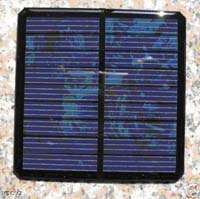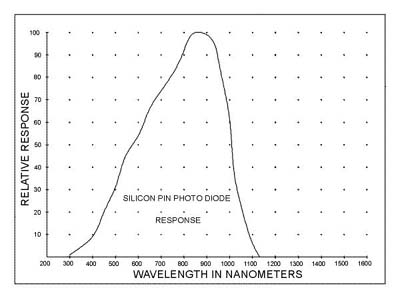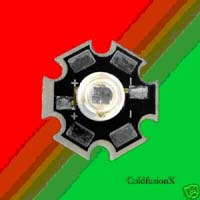|

|
|
|
|
|
|
|
Light
Powered Cell Phone Battery Charger
By: Dave JohnsonI’ve been thinking about
another way to charge a cell phone battery without wires. The usual method, as
outlined in my “wireless battery charger” post, is with a magnetic field coupled
circuit. This works but is somewhat complex and expensive. |
 |
| I often
wondered if light could be used. I imagine some type of paste-on solar panel.
Perhaps it could be attached to the back of the cell phone to charge the battery
from sunlight or from some other light source. |
|
| When exposed to light, the small panel
would route current to the battery. To make this method work for a wireless
battery charger for an indoor night stand, we would need a powerful infrared light
source with a low profile. But, would it work? How much power could we
route to the battery? |
| I looked at my own phone and
measured about 4 square inches of possible light collecting area on its back.
A solar panel consisting of 9 cells, should produce enough voltage to charge a
typical lithium ion battery. Let’s suppose we used some good quality solar
cells. These should be able to convert about 15% of sunlight into
electricity. This works out to about 0.1 watts per square inch. With 4
square inches, that means it could collect about 0.4 watts of power. The
charge current might be about 100ma, with an end of charge voltage of about 4.2
volts. On a typical day, with 6 hours of sunlight, that would yield about
600ma-hours of juice to the battery. This is not enough to fully charge a
dead battery but it is certainly enough to restore about 50% of the total energy
needed. It could certainly top off a battery, allowing it to operate for a
much longer period. But, how would this solar panel work if illuminated with
infrared light from some LEDs? |
 |
|
 |
The curve below is the typical light
sensitivity for a silicon solar cell. Note that when illuminated with near
infrared light of about 900nm, the light to electricity conversion efficiency is
at maximum. It turns out that if 900nm light were used the conversion
efficiency is about 50%. This is not bad. The efficiency of LEDs has
improved a great deal over the years. Many modern infrared LEDs have an
electricity to light conversion of about 25%. If several of those were used
as an energy source, the overall efficiency could reach 12% to the battery.
High power infrared LEDs do exist. I purchased some 5W units not long ago
from eBay. In theory, two of these units might result in about 1 watt of
battery charging power, if the cell phone’s solar panel was placed directly over
the LEDs. This would place the charging current at about 250ma, which is
even more than possible with direct sunlight. However, some additional
losses would be expected, lowering the overall efficiency. |
|
| As a quick
experiment, I fired up one of my 5W infrared LEDs that I bought on eBay and aimed
the light at a nearby one square inch solar cell. I measured the short
circuit current at 250ma. With a four square inch solar panel consisting of
9 cells, the charge current should reach about 100ma if the LED light were evenly
dispersed onto the solar panel. If two LEDs were used, perhaps the panel
current could approach 200ma. So, this indeed looks promising. A
commercial battery charging pad might also use an array of infrared LEDs as shown
below. This might be easier to build and would more evenly illuminate the
panel. I have also seen some arrays of LED chips mounted onto ceramic
wafers. The ceramic conducts heat much better than standard circuit board
material. Still, I think about 10 watts would be the maximum practical power
put onto the array. |
 |
| |
|
 |
Based on
my crude test, it does look like a properly designed LED array should be able to
induce up to 1 watt of power from the solar panel. Assuming a 1 Amp-hour
battery, this means the battery could be fully charged in about 4 hours. A
typical 8 hour night, would be plenty of time to fully charge a dead battery.
Please send
comments to me |
|
|
|
|
|
|
|